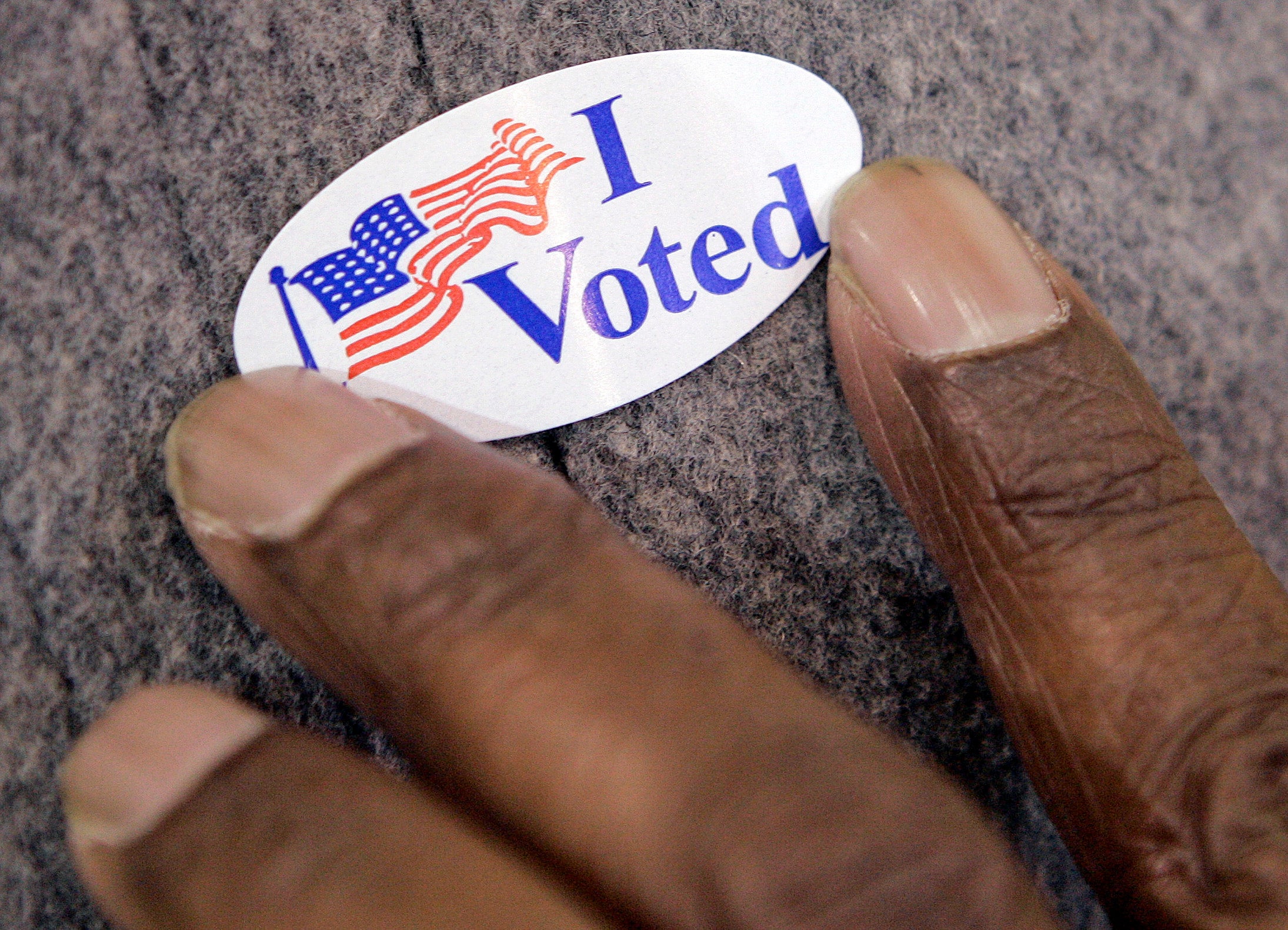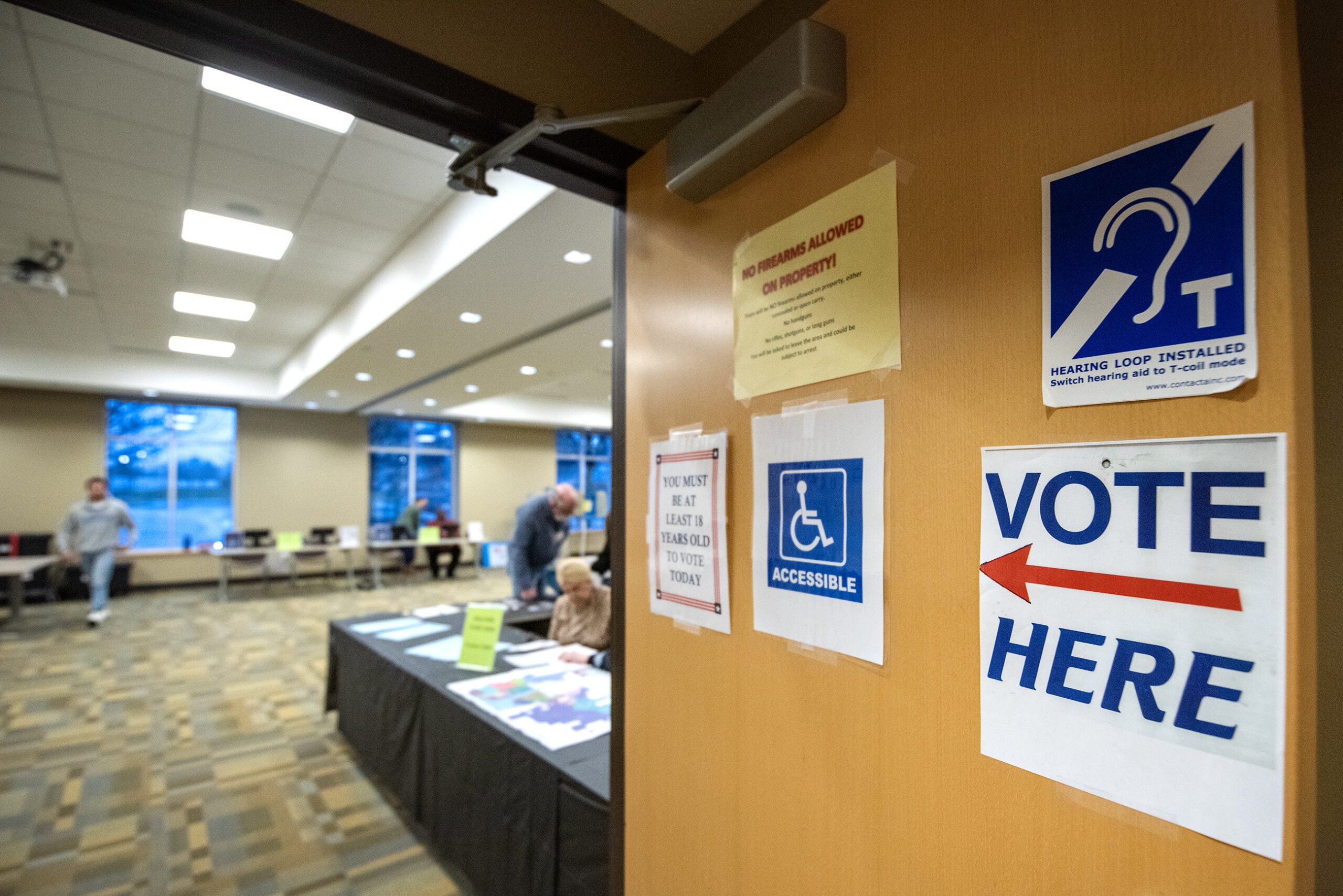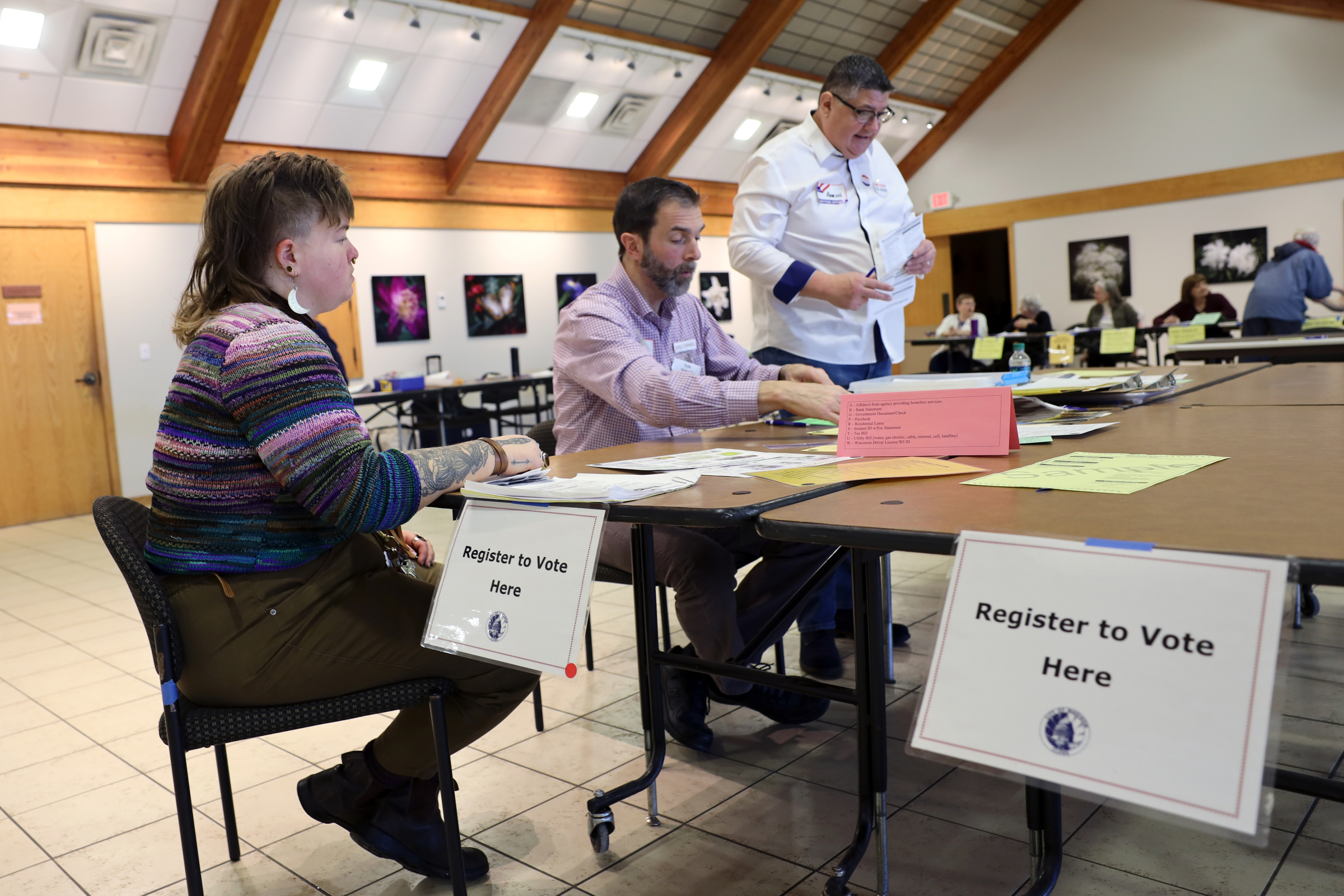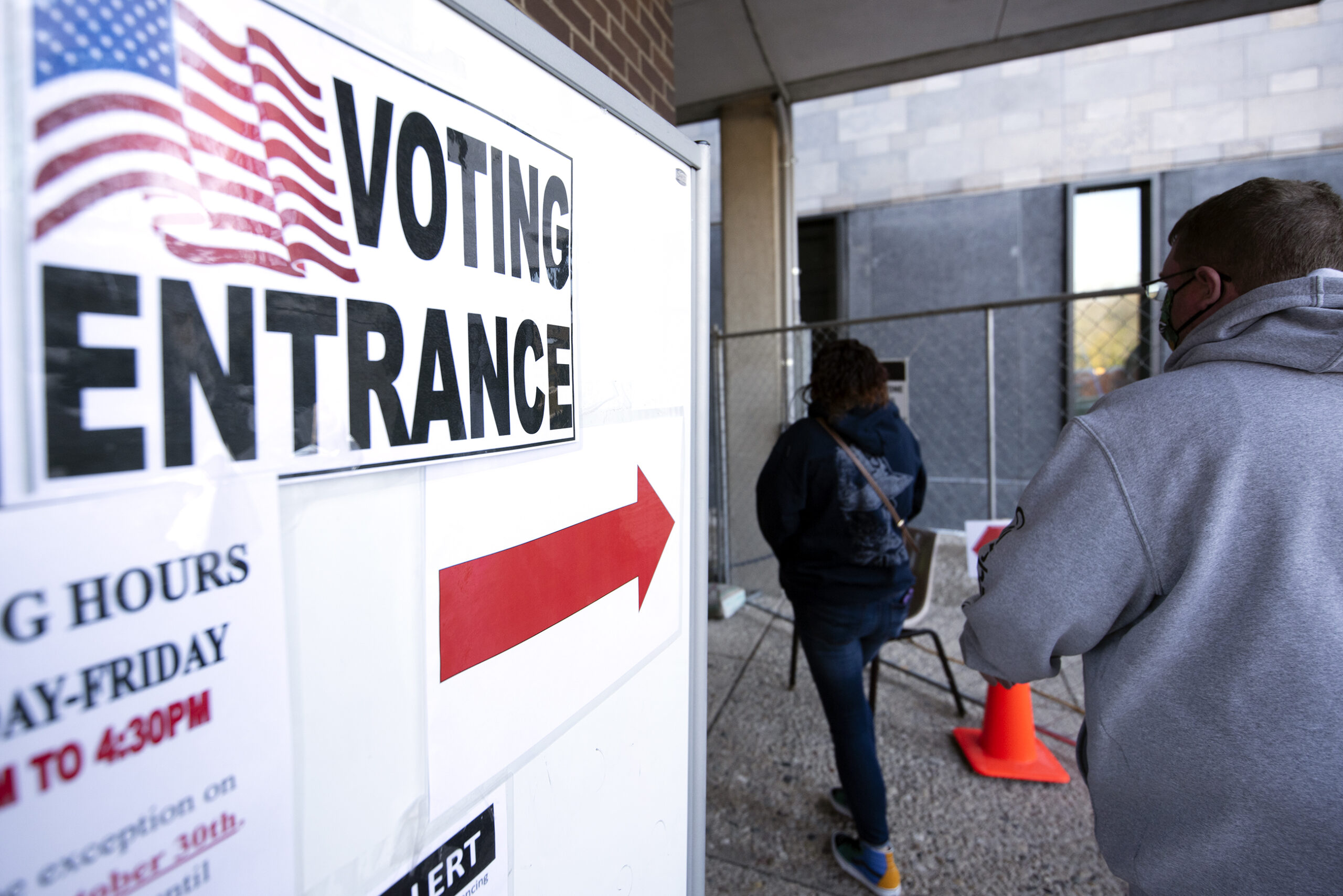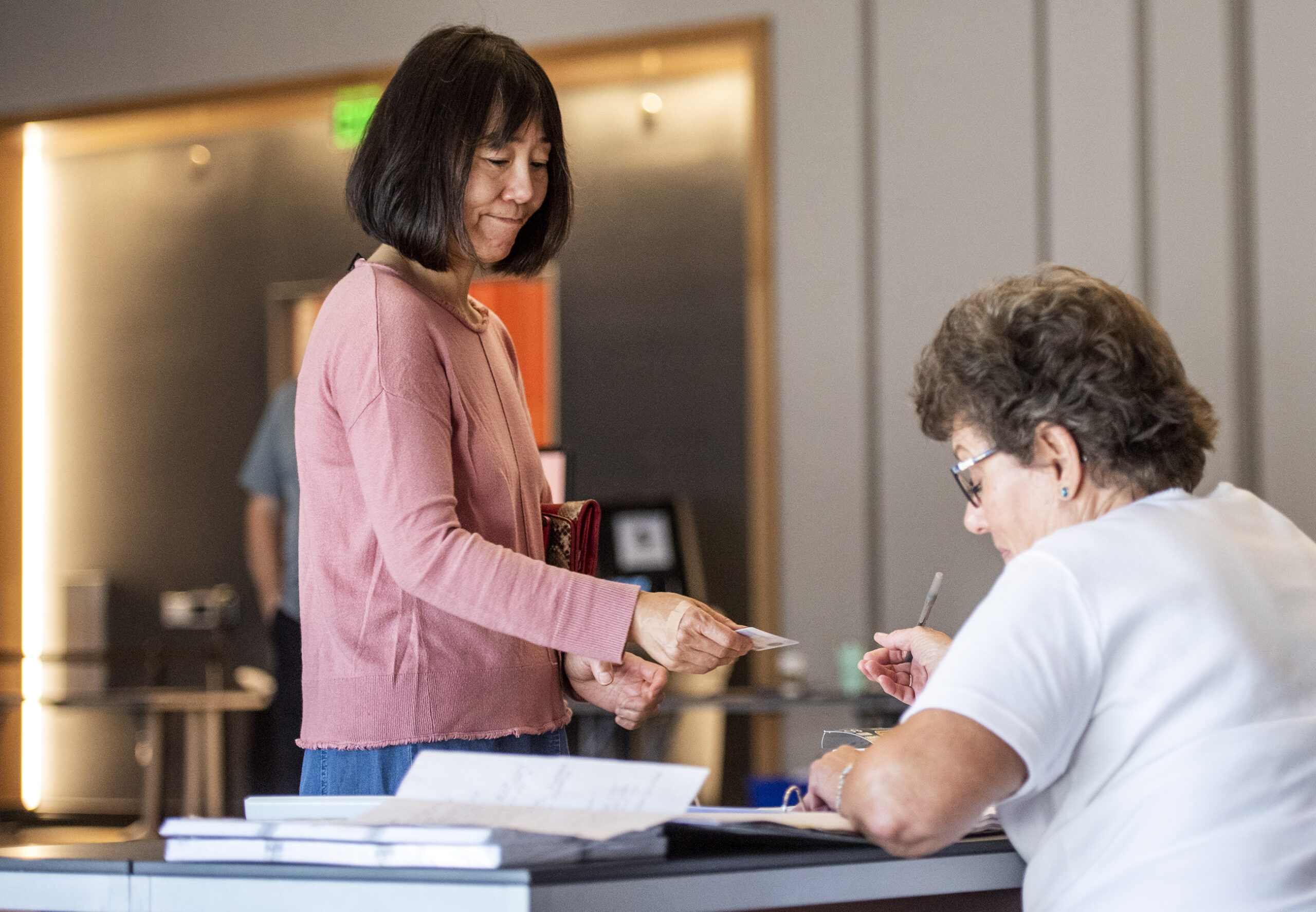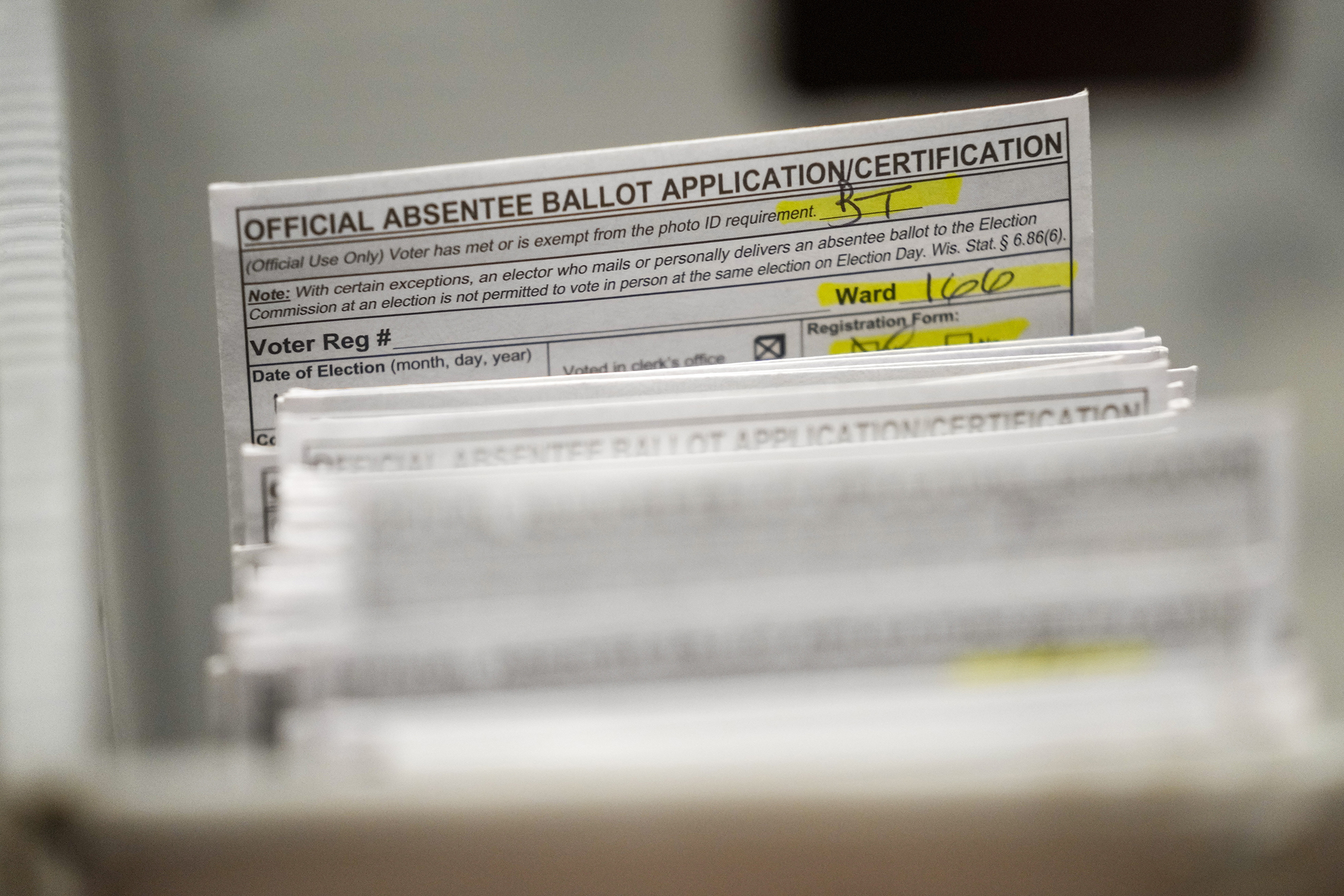Wisconsin voters are stopping by their neighborhood libraries and churches today to cast ballots in the spring election.
In addition to a nonpartisan state Supreme Court race, voters will weigh in on circuit and appellate judges, mayors and school board members, as well as dozens of referendums ranging from medical marijuana legalization to partisan gerrymandering.
Spring elections typically have lower turnout than those in the fall. State, county and municipal election officials predict this year will differ little from that trend.
Stay informed on the latest news
Sign up for WPR’s email newsletter.
“Historically, turnout for an election like this could range somewhere between 20 and 25 percent of the voting age population,” said Reid Magney, spokesman for the Wisconsin Elections Commission. By contrast, the November election drew just below 60 percent of the voting age population, and the 2016 presidential election drew around 70 percent, he said.
In Milwaukee, Wisconsin’s most populated city, turnout held steady throughout the morning, said Neil Albrecht, executive director of the city of Milwaukee’s Election Commission.
Milwaukee projects 25 to 30 percent turnout, or about 60,000 to 70,000 voters. Early reports suggest the city is on track to hit that metric.
“That’s actually high for a spring election,” Albrecht said. The city typically sees just 12 to 14 percent turnout in spring elections. Albrecht attributed the increase to the state Supreme Court race and contested school board races.
The projected 30 percent is a far cry from the 74 percent turnout last November, but not unsurprising, he said.
“We’d like people to turn out in every election, but we do expect a bit of a drop for the April spring election,” Albrecht said.
Turnout will vary throughout the state according to the races and referendums in each municipality.
“Depending on where you are, your mileage may vary,” said Magney.
In Eau Claire, 8 percent of the city’s active, registered voters had cast a ballot by 11 a.m., said Mary Anklan of the Eau Claire Election Office.
By 11 a.m. in Madison, turnout neared 14 percent. The city has, in Magney’s words, a “very hot mayor’s race,” between long-time incumbent Paul Soglin and challenger Satya Rhodes-Conway.
Maribeth Witzel-Behl, Madison’s Clerk, said their spring turnout record is 54 percent in 2011.
Scott McDonell, the clerk for Dane County, said the 13 percent turnout they were seeing as of 11 a.m. looked similar to the last spring election, which finished around 43 percent turnout overall.
Green Bay’s mayoral race has also received attention. The city will elect a new mayor for the first time in 16 years, after incumbent Jim Schmitt decided against seeking re-election.
Kris Teske, Green Bay’s city clerk, said turnout was at 8 percent as of 10 a.m.
Although referendums total 87 this election, clerks in Vernon and Wood County — which have referendums on partisan gerrymandering and medical marijuana legalization, respectively — anticipated the state Supreme Court and local races would drive turnout more.
Trent Miner, Wood County’s clerk, said the medical marijuana referendum is purely advisory.
“I’m cautiously wondering if it is going to impact our turnout at all, and I won’t know that until the end of the night,” Miner said.
Wood County typically sees turnout of 18 to 25 percent, but he said they ordered enough ballots for 40 to 45 percent turnout, just in case.
“In spring elections, it’s really local issues that drive people to the elections. So you’re electing all your town, village and city and municipal officials,” Miner said. “It’ll be those issues that drive people more so than I think that referendum will.”
Wisconsin Public Radio, © Copyright 2024, Board of Regents of the University of Wisconsin System and Wisconsin Educational Communications Board.

